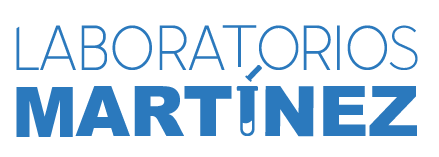-
Unlocking the Future – Exploring the Potential of Quantum AI
-
Understanding Quantum Computing Fundamentals
-
Basics of Quantum Bits (Qubits)
-
Key Principles: Superposition and Entanglement
-
Integrating AI with Quantum Technologies
-
Quantum Machine Learning Models Explained
As artificial intelligence continues to evolve, its synergy with quantum computing presents unprecedented opportunities across various domains. By leveraging the unique properties of quantum mechanics, AI quantum ai app can transcend classical limitations, enabling faster processing and more sophisticated problem-solving capabilities. Industries such as healthcare, finance, and logistics stand to benefit significantly from these innovations.
Recent studies have demonstrated that quantum algorithms can outperform traditional methods in complex tasks, such as optimization and machine learning. For instance, quantum models can analyze vast datasets at speeds unattainable by conventional computers, paving the way for breakthroughs in drug discovery and personalized medicine. This advancement offers a glimpse into how industries might not only enhance efficiency but also drive innovation, reshaping competitive landscapes.
Organizations aiming to integrate these cutting-edge technologies must invest in talent with expertise in both AI and quantum theory. Collaborations between academia and industry will be crucial for developing practical applications and scalable solutions. Emphasizing interdisciplinary research can accelerate understanding and implementation, ensuring that companies remain at the forefront of this technological transformation.
Understanding Quantum Computing Fundamentals
Quantum computing represents a revolutionary approach to information processing based on the principles of quantum mechanics. Traditional computers utilize bits as the smallest unit of data, represented as 0s or 1s. In contrast, quantum systems employ qubits, which can exist in multiple states simultaneously due to superposition.
Key concepts to grasp include:
- Superposition: Unlike classical bits, qubits can represent 0, 1, or both at once. This characteristic allows quantum machines to handle an exponential number of calculations simultaneously.
- Entanglement: This phenomenon occurs when pairs or groups of qubits become interconnected, such that the state of one qubit directly influences the state of another, regardless of the distance separating them. Entangled qubits enable faster information transfer and enhanced computational capabilities.
- Quantum Interference: Quantum algorithms leverage interference to amplify the probability of correct solutions while canceling out incorrect ones, significantly improving processing efficiency.
Several quantum algorithms show promise in various fields:
- Shor’s Algorithm: Efficiently factors large integers, posing a potential threat to traditional cryptographic systems.
- Grover’s Algorithm: Offers a quadratic speedup for unstructured search problems, making data retrieval faster compared to classical methods.
- Quantum Simulators: Models complex quantum systems, providing insights into materials science, chemistry, and fundamental physics.
Practical implementations face challenges, including:
- Decoherence: Quantum states are susceptible to interference from their environment, which can lead to loss of information.
- Error Rates: Current quantum devices demonstrate higher error rates than classical systems, necessitating error correction methods.
- Scalability: Building large-scale quantum computers requires advancements in qubit production and integration.
For those interested in entering this sphere:
- Familiarize yourself with quantum mechanics principles.
- Learn programming languages designed for quantum systems, such as Qiskit or Cirq.
- Engage with research communities and online courses to stay updated on advancements.
As developments progress, understanding these fundamentals can prepare individuals for roles in this transformative field, guiding innovations across multiple industries.
Basics of Quantum Bits (Qubits)
Qubits serve as the fundamental units of information in quantum computing. Unlike classical bits, which represent either a 0 or a 1, qubits can exist in a state of superposition, allowing them to represent multiple states simultaneously. This unique property enables quantum systems to handle complex calculations at unprecedented speeds.
Several properties distinguish qubits from their classical counterparts:
| Superposition | A qubit can be in a combination of 0 and 1 states, expressed as α|0⟩ + β|1⟩, where α and β are complex numbers. |
| Entanglement | Qubits can become entangled, meaning the state of one qubit is directly related to the state of another, regardless of distance. |
| Interference | Quantum states can interfere with one another, allowing for the amplification of certain probabilities and cancellation of others, which is essential for algorithm optimization. |
A commonly encountered representation of qubits is through physical implementations, such as trapped ions, superconducting circuits, and topological qubits. Each of these technologies offers distinct advantages, influencing qubit coherence times, error rates, and scalability.
When designing quantum algorithms, understanding qubit states and manipulations is crucial. Techniques such as quantum gates, which alter the state of qubits, are pivotal to building quantum circuits. For examples, applications like the Hadamard gate create superposition, while CNOT gates facilitate entanglement.
Evaluating qubit fidelity is vital for determining operational efficiency. Quantum error correction strategies enhance reliability and ensure that information is preserved despite noise and decoherence. Techniques like surface codes are employed to protect qubit integrity during computations.
In summary, qubits stand as cornerstones of advanced computational frameworks, providing capabilities beyond traditional computing paradigms. As research continues, optimizing qubit performance will remain a focus, paving the way for breakthroughs across various scientific fields.
Key Principles: Superposition and Entanglement
Superposition is a foundational element in quantum physics, allowing a quantum bit (qubit) to exist in multiple states simultaneously. Unlike classical bits, which represent either a 0 or a 1, qubits can embody both values at once, enhancing computational power. This characteristic significantly accelerates processing capabilities in algorithms like Shor’s for prime factorization and Grover’s for search problems.
Applying superposition in artificial intelligence enables complex problem-solving by evaluating a vast array of possibilities at the same time. For instance, training machine learning models can benefit from superposition, as it permits simultaneous testing of various configurations, leading to faster convergence on optimal solutions.
Entanglement further elevates computational potential. When qubits become entangled, the state of one qubit is directly correlated with the state of another, irrespective of the distance separating them. This phenomenon creates a high-dimensional space for computation, which traditional systems cannot replicate. The implications for secure communication protocols, such as quantum key distribution, are profound, as entangled states can detect eavesdropping attempts instantly.
The integration of these principles into AI systems prompts the re-evaluation of classical algorithms. Researchers advocate designing algorithms that leverage the interconnectedness of entangled qubits to enhance data interpretation and decision-making processes. For modern applications, such as optimization in logistics or financial modeling, harnessing these quantum phenomena can lead to groundbreaking advancements.
Exploring applications of superposition and entanglement presents a frontier for innovation. Developers are encouraged to focus on hybrid systems that combine classical AI algorithms with quantum techniques. Such frameworks can optimize performance, opening new pathways for research and development in various sectors, from healthcare to finance.
Integrating AI with Quantum Technologies
The convergence of artificial intelligence and quantum computing promises advances in multiple fields such as optimization, cryptography, and material science. By utilizing quantum bits or qubits, algorithms can perform operations at speeds unattainable by classical systems. Notably, numerical simulations in drug discovery, financial modeling, and energy systems optimization benefit from this integration.
Machine learning techniques can enhance the calibration of quantum circuits. Techniques such as reinforcement learning enable adaptive control of quantum systems, thereby optimizing their performance and error correction. Moreover, neural networks can be utilized for pattern recognition tasks on quantum data, allowing swift classification and prediction capabilities.
Implementing this hybrid approach requires specialized frameworks. One such framework, Pennylane, supports quantum machine learning and allows developers to create and execute hybrid quantum-classical algorithms. Additionally, Qiskit, developed by IBM, provides tools for building quantum algorithms that interface with classical systems, facilitating seamless integration.
Furthermore, researchers are experimenting with Quantum Reinforcement Learning. This method leverages the unique nature of quantum mechanics to build agents capable of learning more efficiently in complex environments, outperforming classical algorithms in specific scenarios.
Data representation also changes significantly with quantum integration. Quantum states can encode information in a way that classical bits cannot, leading to exponential information density. Quantum-enhanced feature spaces enable AI algorithms to extract complex patterns from data sets that would be computationally prohibitive with conventional computing.
While promising, this integration faces challenges. Noise and decoherence in quantum systems can hinder algorithm performance. Developing error-resilient algorithms is essential for practical applications. Additionally, bridging the skills gap in quantum programming requires educational initiatives, as many AI practitioners lack training in quantum mechanics.
Long-term strategies should include multidisciplinary collaborations among computer scientists, physicists, and engineers. This cooperation will ensure not only the optimization of existing algorithms but also the creation of novel applications that harness the unique characteristics of quantum systems.
Quantum Machine Learning Models Explained
Machine learning harnesses computational power to analyze data patterns, offering new avenues in various sectors. Integrating principles from quantum mechanics amplifies these capabilities significantly. Quantum machine learning entails algorithms that utilize quantum bits, or qubits, providing benefits like enhanced speed and efficiency in processing complex datasets.
One of the foundational models is quantum support vector machines (QSVM). This model leverages quantum computing’s linear algebra capabilities to optimize classification tasks. By employing kernel methods in high-dimensional spaces, QSVMs can classify data that traditional methods struggle with, particularly in environments with vast datasets.
Quantum neural networks (QNN) represent another promising approach. These networks operate on quantum states, enabling them to process information in parallel. By employing entanglement and superposition, QNNs exhibit the potential for greater accuracy in tasks such as image recognition and natural language processing. Research indicates that QNNs can outperform classical neural networks in specific scenarios, particularly where quantum data is involved.
Additionally, quantum reinforcement learning applies quantum algorithms to enhance learning from interactions with environments. This approach can optimize decision-making processes in real-time applications, making it suitable for fields like finance and robotics. The synergy between quantum algorithms and reinforcement learning principles can lead to strategies that adapt more rapidly than classical counterparts.
To effectively utilize these models, researchers must adopt a multi-faceted approach. Collaboration across disciplines will foster innovation, ensuring that quantum algorithms are tailored for specific applications. It’s crucial to comprehend the intricacies of qubit manipulation and error correction techniques, as these factors significantly influence model performance.
Investing in robust quantum infrastructure is paramount. Organizations should focus on developing quantum processors with higher fidelity and coherence times to realize the full benefits of quantum machine learning. Additionally, software frameworks specializing in quantum environments, such as Qiskit or Pennylane, become essential tools for researchers and developers alike.
In summary, marrying aspects of machine learning with quantum principles creates a transformative paradigm. Understanding these advanced models enables businesses and researchers to explore novel applications, leading to breakthroughs in various domains. The forthcoming phase in machine learning will increasingly rely on these quantum methodologies, driving innovation and enhancing computational capabilities.


